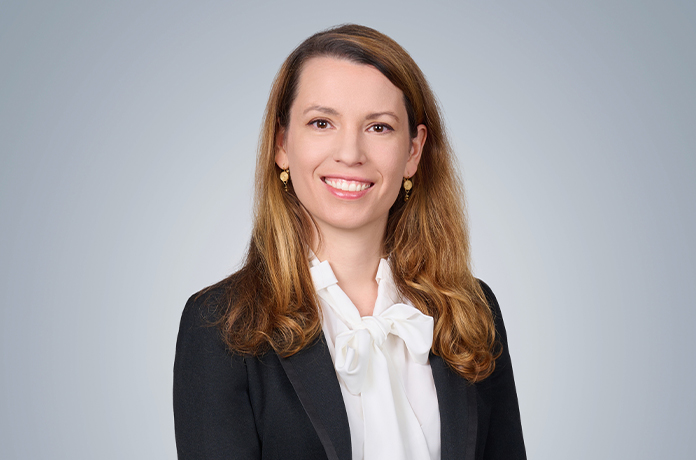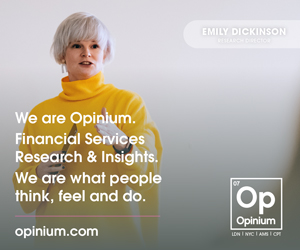With almost $1trn in client assets, Fidelity International seems to know what its 2.8 million customers around the world want, and that, increasingly, is a digital approach to investment.
Originally part of the US giant Fidelity Investments, the company span out to independence in 1980 and has developed a brand and character all of its own, which today includes a keen interest in how its clients think about digital assets.
Unlike its US cousin, which has been bitcoin mining since 2014, Fidelity International has taken a more thoughtful approach, yet one that still reflects the increasing client demand for a faster, more dynamic experience within their portfolios that is brought through the technology underlying crypto and other digital native instruments.
“What sets Fidelity [International] apart from other asset managers is our distribution-led approach to digital assets, particularly fund tokenisation,” says Emmanuelle Pecenicic, head of digital propositions and partnerships Asia Pacific xJapan at the company.
“Retail investors who buy crypto enjoy an instantaneous, transparent, and accessible experience—something traditional finance lacks,” she says. “My focus has been on bringing that same ease of access to traditional financial products. I always approach this from the end-client’s perspective.”
With a career that began in wealth management, Pecenicic has remained focused on the buyside and the evolving client need. Moving to Hong Kong from Paris with BNP Paribas Asset Management in 2012 marked a fork in the road towards a digital future.
“At the time, China’s market was fluctuating, and BNP Paribas was investing heavily in digitisation, so I transitioned to their global transformation team,” she says. “Initially, I worked on AI applications for investment processes, automating reporting using natural language generation, and exploring fintech innovations. Later, I engaged with crypto, bringing blockchain initiatives into the company.”
Pecenicic worked on the tokenised debt raising for French electricity company EDF, run by the investment bank within the BNP Paribas group and finalised in 2022. The lead on the sell side of the deal featured in the launch edition of Financial Promoter.
At this point, Pecenicic was leading digital strategy for asset management, including partnerships across Asia, but attracted to Fidelity’s blockchain initiatives, she wanted to get hands-on with crypto.
She now leads multiple areas within digital assets globally for the company, is a board member of the Fintech Association of Hong Kong and a founder member of Web3 Women in the territory.
Three-fold-focus
At Fidelity International, her role has three key focus areas, which can all be directly linked to the evolution of the company’s client demand. The first is establishing digital assets as an asset class and helping traditional clients invest in crypto; the second is a push towards tokenisation, enabling crypto investors to access traditional assets; the third is an expansion of digital distribution channels, increasing the availability of mutual funds and asset management services across digital platforms.
The company divides these digital platforms into four main areas: Digital and virtual banks, online brokerage firms, ecosystem platforms (e.g., Ant Financial) and crypto platforms, which include digital asset banks, tokenisation platforms and crypto exchanges.
These terms may have once sounded futuristic – especially to a buyside happy with the status quo – but an evolving client base and generational shift in investment objectives, mean this is no longer the case.
“By engaging with the market and analysing trends, we’ve noticed convergence between traditional finance and crypto platforms,” she says.
And, as one of the world’s largest managers of client assets outside of the US, it’s Fidelity’s goal to act as a bridge. Already, several large digital banks in Europe integrate Fidelity’s money market funds (MMFs) into their services.
“Cash Plus (powered by Fidelity) is available via European digital banks and Singapore’s Revolut,” she says. “Investors don’t see Fidelity’s branding because our products are fully integrated into their platforms.”
The company also offers model portfolio advisory solutions delivered via brokerage platforms and virtual banks, ETFs, which are gaining traction on digital investment platforms and fund tokenisation, especially for crypto investors.
“It’s been a journey, and our approach differs from others because we’ve been distribution-led from the start,” she says. “Our tokenised funds are already live with distributors, proving that this is far beyond proof-of-concept.”
Certainly, Fidelity International has been one of the first large asset managers, to actually offer investors a real taste of a tokenised future.
Partnering for growth
While clear to note the separate nature of the two brands, Pecenicic explains how collaboration with Fidelity Investments, has unlocked new opportunities. “In 2022, Fidelity International introduced the Bitcoin ETP in Europe and entered tokenisation with distributors.”
But the big reveals and market-shifting deals have come later, opening up the potential for expansion and market share.
In November 2024, Fidelity International was one of three major asset managers that exchange, broker and digital asset custodian Archax added to its platform through which investors could access tokenised real-world assets (RWAs).
Starting initially with access to MMFs through beneficial ownership tokens, the press announcement noted how this “might be expanded to include other fund offerings in due course”.
This news had followed the announcement of a successful proof-of-concept of a tokenised MMF with an embedded digital FX swap that demonstrated real-time settlement, which had resulted from a collaboration between Citi and Fidelity International in Singapore.
Within the PoC announcement, Pecenicic noted how the company’s aim was to develop “practical approaches that promote capital efficiency, democratise access to financial services, and bring value”.
But this does not happen overnight, and almost 10 years into her digital journey, Pecenicic does not underestimate the work that needs to be done to bring PoC to real world revolution.
“Phase one is distribution, then usability and scalability,” she says. “The real impact will come when tokenisation transforms asset management, not just distribution.”
For example, today, multi-asset funds consist of multiple sub-funds, requiring complex legal structures. In the future, tokenised baskets of assets could streamline this process, reducing inefficiencies, she believes.
With automation and composability, managing multi-asset portfolios at scale will be far more efficient, and, while avoiding a prediction on exact timing, Pecenicic believes the technology supports scale, meaning industry consolidation is inevitable.
“Tokenisation sits at the intersection of securities regulations and crypto regulations,” she says. “To distribute tokenised funds on crypto platforms, firms need both infrastructure and securities licenses, which very few hold.”
Several European countries have already clarified their regulatory frameworks, leading to greater adoption. The US, UK are striding to make up ground, while Asia has already shifted gears. This decisive action – or relative reticence – may influence where the innovation led by client demand and protections develops.
As this magazine was going to press, Fidelity International – along with partners Visa, ANZ and ChinaAMC HK – had just published the interim findings into The Role of Tokenised Money & Funds in Cross-Border Transactions.
For Pecenicic the message to clients and peers is clear.
“This isn’t just a proof-of-concept anymore—our tokenised funds are live with distributors, and we’re moving into the digital-native phase,” she says. “After years of investment in digital assets, Fidelity is bridging traditional and crypto finance at a pivotal moment.”



